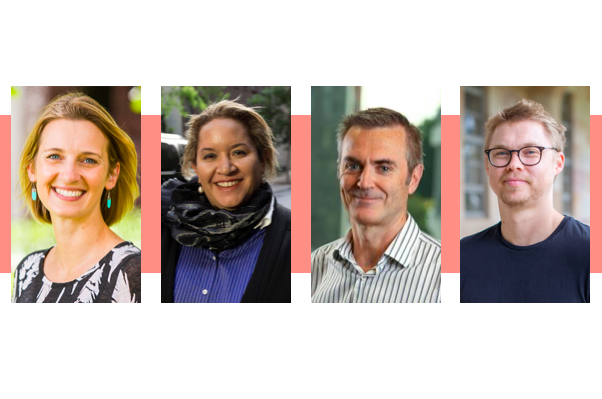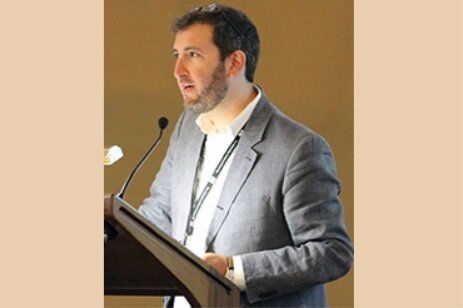

Western Australia after the Juukan Gorge Inquiry: Little solace for Aboriginal people
Hannah McGlade
10.12.2021
The Joint Standing Committee on Northern Australia’s Inquiry into the destruction of Indigenous heritage sites at Juukan Gorge reported in October. Its report, ‘A Way Forward’ called for a new national framework of Aboriginal heritage protection co-designed with Aboriginal people. …

The Uluru Statement and changing the culture of power and decision-making
Eddie Synot
28.10.2021
Administrative justice is a key issue for Indigenous peoples. Whether at the level of policy development and implementation, or at the level of administration and review of government programs and decisions, persistent issues plague Indigenous experiences of administrative justice. …

Reforming the rules for free and fair referendum
Gabrielle Appleby, Sean Brennan, Megan Davis & Dylan Lino
19.10.21
A parliamentary committee has decided it is time to review the rules that govern the lead-up to and operation of constitutional referendums in this country. As a group of constitutional law experts at the Indigenous Law Centre, committed to …

NAIDOC Week 2021: It’s Time.
Megan Davis
09.07.21
It is common practice in constitution making around the world that detail of a particular constitutional institution is deferred to the parliament at a later date. Indeed, this was the case with Australia’s High Court. The Court was established and its core functions set out in the Constitution in 1901, but it was set up two years later in legislation by the Parliament.
The same idea applies to the First Nations Voice. As Sean Brennan’s post explains …

NAIDOC Week 2021: What a referendum ballot could and should look like
Ron Levy
08.07.21
If and when the Australian people go to a referendum on whether to constitutionally enshrine a First Nations Voice, they will express their views on a ballot paper. For many Australians, they will never have seen a referendum ballot; for others, it will be over 20 years.
Can design of the referendum ballot lead to a more informed and deliberative engagement of voters with the question at hand? This matters because informed consent, not just consent, by citizens …

NAIDOC Week 2021: 1967 to 2021: What will a successful referendum look like in 2021/2022?
Paul Kildea
07.07.21
Momentum is building towards a referendum for a constitutionalised First Nations Voice. Optimists look back to the 1967 referendum, when more than 90 per cent of Australians voted to include Aboriginal people in the powers of the Commonwealth. But Australia’s overall referendum record is daunting: just 8 of 44 referendums have passed since Federation. What steps can we take to help ensure a successful referendum on a First Nations Voice …

NAIDOC Week 2021: The Wording is Not the Problem
Sean Brennan
06.07.21
One challenge on the path to a successful Voice referendum is to get the wording right for the constitutional amendment. The most important thing is clarity: a well-defined purpose, and clear and simple words that give effect to that purpose. The work here is largely done. The vision for practical reform that emerged from the Regional Dialogues and at Uluru supplies the purpose for this constitutional amendment. The delegates at Uluru called for a representative First Nations institution that would give them a voice – particularly to the nation’s chief law-making body, the …

NAIDOC Week 2021: Why a legislated voice is not a “constitutionally enshrined voice to parliament”?
Elisa Arcioni
05.07.21
Creating an Indigenous Voice in ordinary legislation is creating a fundamentally different thing to establishing it, or “enshrining” or “protecting” it, in the Constitution. And if we consider what the intention of the Voice is, only constitutional enshrinement makes sense.
The First Nations Voice called for in the Uluru Statement from the Heart is intended to be an institutional vehicle through which First Nations peoples can speak to government and …

The Indigenous Law Centre releases expert analysis of the NIAA public consultations
Gabrielle Appleby, Emma Buxton-Namisnyk & Dani Larkin
29.06.21
Today, the Indigenous Law Centre released an Expert Analysis of the NIAA Public Consultations. This provides an expert analysis of the thousands of public submissions, and records of community consultations, that were undertaken as part of the government’s 2020-2021 Co-Design Process for a national and regional/local Indigenous Voice. The genesis of this report is in concerns that the exclusion of the question of constitutional enshrinement from …

Representation and Good Governance: Institutional Transformation via Voice to Parliament
Kate Galloway and Dani Larkin
18.06.21
The Uluru Statement from the Heart recommends a First Nations Voice to Parliament, Treaty with First Nations, and Truth-telling as essential components for establishing proper legal relations between the Australian State and First Nations peoples. A First Nations Voice provides the first step to appropriate engagement, through institutional reform. Constitutional provision for a Voice to Parliament has …

How Culture Shapes Australia’s Referendum Record
Paul Kildea
11.06.21
Richard Albert’s Constitutional Amendments: Making, Breaking and Changing Constitutions offers a comparative, conceptually rigorous treatment of a complex and significant field in the study of law and politics. In this post I focus on Richard’s ideas about amendment difficulty and how they might help us to make sense of Australia’s recent referendum record and ongoing debates around the constitutional enshrinement of a First Nations …

The First Nations Voice: A modest and congruent, yet radically transformative constitutional proposal
Gabrielle Appleby
11.06.21
Richard Albert reveals in the final page of the introduction to his book, Constitutional Amendments: Making, Breaking and Changing Constitutions, what he wants others to take away from it. First, he wants scholars to reflect on their system of constitutional amendment, to inspire interest in the subject matter and his arguments. Second, he wants the book to be a resource for those embarking on constitutional change: to become ‘a focal resource for leaders involved in making or remaking their constitution …

What do we know about public attitudes to a First Nations Voice?
Francis Markham and William Sanders
15.05.2021
The cases for and against enshrining a First Nations Voice in the Australian Constitution are often said to hinge on its chances of success at a referendum. For example, in late 2020, when asked why the Coalition had rejected calls to enshrine a First Nations Voice in the Constitution, the Minister for Indigenous Australians Ken Wyatt argued …

The Latest Australian Constitutional Values Survey
Jacob Deem
13.05.2021
Establishing a First Nations Voice to Parliament has been an emerging focus of the push for constitutional recognition of First Nations since 2015. It emerged as a priority for reform from Aboriginal and Torres Strait Islander people themselves, as articulated in the Uluru Statement from the Heart in 2017. The proposed Voice has become the centre of efforts to give First Nations a permanent say in …

Designing a Voice to Parliament to strengthen First Nations sovereignty
06.05.2021
Four years ago, the Uluru Statement from the Heart changed my mind on constitutional recognition. Like many, I saw the Recognise campaign and its push for a symbolic recognition of First Peoples in the Constitution as a distraction. A government and corporate-sponsored campaign that would do little to alter the systemic injustice and racism that harms First Peoples across Australia, while giving the appearance of a grand gesture of change …

“It’s you young ones’ fight now”
Bridget Cama
23.04.2021
I have witnessed many people, from diverse walks of life, black and white, stand in front of the Uluru Statement from the Heart and gaze at it in silence after reading it for the first time.
1…2…3… the seconds tick on.
At most they will whisper, “wow” …

The First Nations Voice: An Informed and Aspirational Constitutional Innovation
Gabrielle Appleby & John Williams
25.03.2021
All constitutional settlements are a product of their time, place and history, and of the values, knowledge and aspirations of their drafters. In navigating the reality and ambitions of the settlement, drafters will, of course, draw on what they know. A sensible attempt at a new constitutional settlement should be anchored in deep reflection of what has gone before. But …

Submission: The imperative of constitutional enshrinement
18.03.2021
This is a submission that was made to the consultation process on the Interim Report to the Australian Government on Indigenous Voice Co-Design Process (October 2020) by a group of 40 public law experts from across the country. That consultation process closes on 31 March 2021. The submission expresses a strong and unanimous view that for the Voice to have legitimacy, …

Membership Models for an Indigenous Voice: What does representation mean for First Nations?
Dani Larkin
11.03.2021
The Elders, Traditional Owners and community voices at the Regional Dialogues and the First Nations Constitutional Convention that adopted the Uluru Statement from the Heart in 2017 were clear on two things. First, that the First Nations Voice would be constitutionally created and protected (constitutional enshrinement), that would guarantee is existence and establish its power …

Consultation and a First Nations Voice: Building on the Aboriginal and Torres Strait Islander Commission
Harry Hobbs
05.03.2021
In January Ken Wyatt, the Minister for Indigenous Australians, released the Indigenous Voice Co-Design Interim Report. Developed by a Senior Advisory Group led by Professors Marcia Langton and Tom Calma, the 239-page report adds considerable detail to the Uluru Statement from the Heart’s proposed First Nations Voice. The report offers a series of practical and feasible options for how …